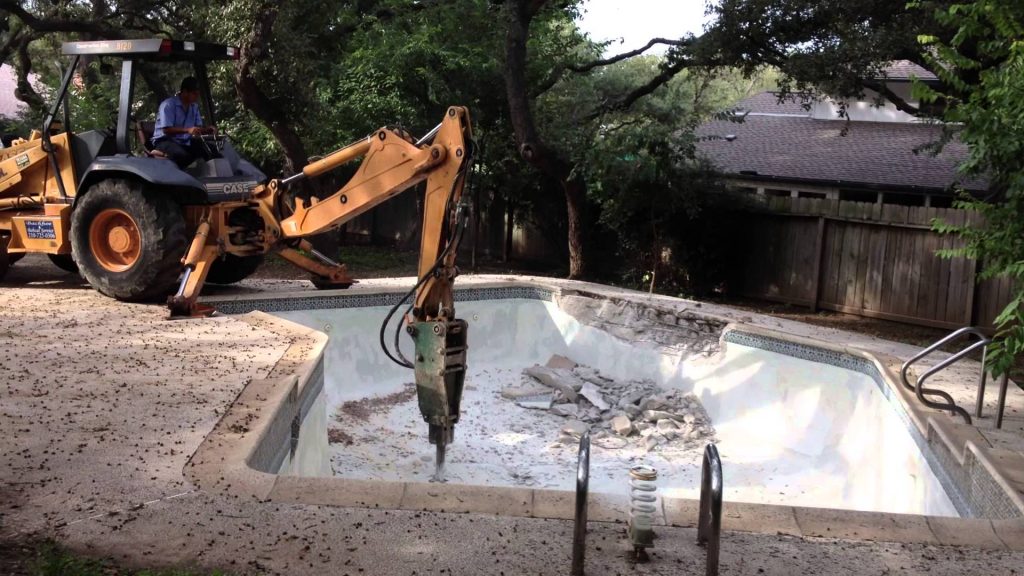
Which Type of Swimming Pool Removal is Best for You
What may have started as a great idea for your home can quickly turn into a money pit for many. Once you decide it’s time to get rid of your pool, it’s not a simple or quick task. A lot of pool demolition will depend on your city’s regulations- some cities allow you to partially collapse and fill the pool, while other require you to completely remove all concrete and backfill the area with a licensed engineer.
Partial Removal + Non-Engineered Fill
This is often the most common removal type for pools. The process involves creating holes in the bottom of the pool, breaking the sides down 18″-36″ and then filling/compacting the space with no required engineer supervision.
- Advantages: Most people who are focused on pricing will go for this option for its low cost and the fact it can be done in just 4 or 5 days.
- Disadvantages: While it may look average once filled in, if you sell your home you will be required to disclose to any future buyers of this, which can devalue it since it makes that area unbuildable.
Partial Removal + Engineered Fill
This will be the same process, but an engineer technician would do density testing before filling and also submit a letter to the city. Typically this is only necessary if required by the city.
- Advantages: This has the same advantages in cost and speed, but the added bonus that you have engineer verifications that it’s done properly.
- Disadvantages: Though verified, you will still have to disclose to future buyers the partial removal.
Full Removal + Non-Engineered Fill
All concrete, fiberglass, tile, liner, re-bar, and other materials are removed from your in ground pool and disposed off properly, then the cavity is filled in.
- Advantages: If selling your home, the full removal means none of the property is un-buildable and keeps the value high. Additionally, without concrete or debris left over, the backfill is much more likely to be even and completed correctly.
- Disadvantages: If anything goes wrong with the fill, you have no verification that it was done properly. If you are going to go through the expense to fully remove the swimming pool anyways, spend the extra money and have it properly engineered to cover all your bases.
Full Removal + Engineered Fill
As above, all materials are removed and hauled offsite, and the area is filled and compacted. With an engineer, you’ll also get your demolition plan stamped by a state licensed engineer, they will perform density testing and supervise any filling, and submit a final review stating the area is “buildable” after removal.
- Advantages: This is the absolute best process as it covers all bases and ensures your property value.
- Disadvantage: The only downside is that it’s the most expensive option.
This is a rough overview for inground pool removal, but there are local and situational differences in each demolition. Make sure you consult in depth with a swimming pool demolition contractor about your home and what the right process is before starting and project.
]]>